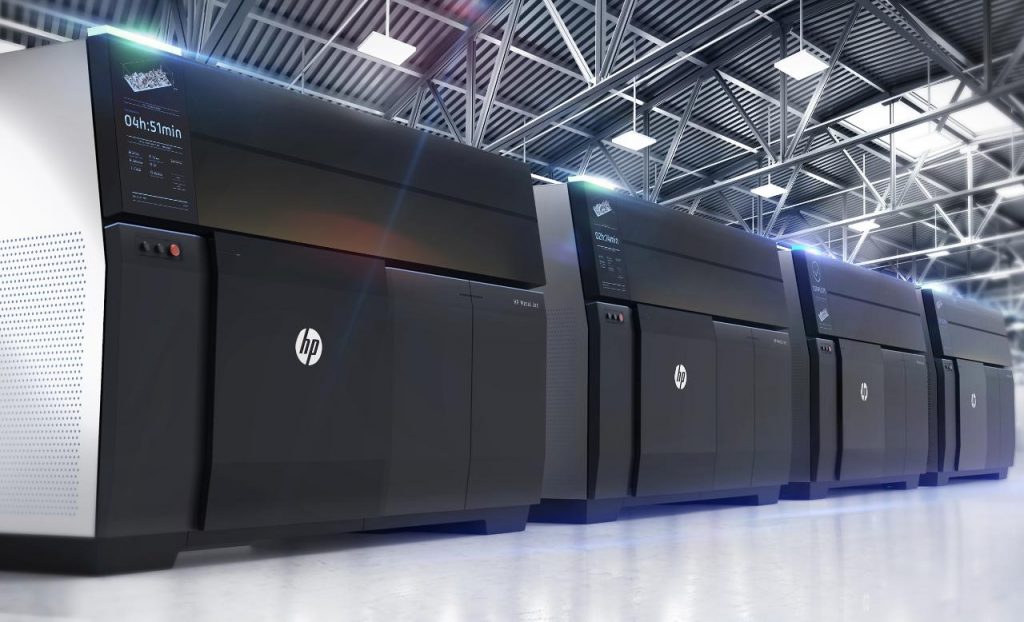
Paul Benning is the 3D Print and Microfluidics Chief Technologist at HP. Before that he was an HP Fellow and the Chief Technologist of their imaging and printing division. He’s a noted expert in nanotech, microfluidics, and inkjet with a Ph.D. in Material Science. I’m really impressed with the caliber of people at HP and the amount of thought that they put into their technology and all of the aspects that surround their technology. I, therefore, jumped at the chance to interview Paul about some key trends for 2019. I’m glad that we got to learn that HP is able to print circuits on its machines and that they’re going to be incorporating machine learning into manufacturing. I’m also glad that Paul’s predictions are firmly rooted in practice science and manufacturing and not in “dream a little dream” blah blah like so many predictions.
Machine learning could significantly reduce scrap rates in 3D printing, is this something you would expect to happen in the near term?
I expect machine learning to escalate innovation in the manufacturing industry in the coming year. As machine learning is integrated more into 3D printers and control systems around the world, engineers and designers will be able to receive information about the temperature of the machine, what the powder looks like, binding agents used, image data and final part geometries. All of this information will aid in reducing scrap rates and ensure the parts produced are concise and fully functional.
How do you see machine learning and 3D printing interact?
In addition to being able to share more information than ever before with engineers and designers, the integration of machine learning and 3D printing delivers the capability to monitor a part in the field. People can follow the finished part into the world and see how it performs over its lifespan, tying the findings back to design configurations. Designers can uniquely peg every party and track them via a serial number, enabling real-time supply chain traceability.
Can machine learning be used to reduce part shrinkage for example?
Yes, machine learning will be used to improve the process during development and to provide real-time feedback during part printing and this level of control will help to optimize all performance vectors including part shrink. An even more significant impact of machine learning might be in more precisely predicting part shrink so that the design and process can pre-compensate for the predicted deformation producing a printed part with tighter tolerances.
Do you really think that generative design will make designers faster? How?
Absolutely. Generative design has the potential to make designers 10-100x faster by leveraging algorithms to discover every possible iteration of a solution. Engineers can create and simulate thousands of designs – including those that they’re unable to envision themselves – in a fraction of the time. The beauty of generative design is that engineers are no longer limited by their own imagination but can instead leverage artificial intelligence to co-create better products in a faster and more sustainable fashion.

To what extent will simulation improve generative design so that parts can be optimized?
By building in simulation and testing to the design process, engineers avoid expensive manufacturing re-works. This helps optimize parts by ensuring technology is an active participant in the design process, rather than simply reflecting actual finished designs.
Do you also expect toolpath optimization for particular geometries?
For Multi Jet Fusion and Metal Jet the “toolpath” is replaced by the printed pattern and decisions of where drops of each agent are placed. I do expect that the drop placement patterns will be optimized for particular geometries to produce precise and mechanically strong parts.
And if we do how do we feed this information back into generative design software?
Using information shared back from machine learning monitoring 3D printed parts in the field, designers and engineers can input real parameters into generative design software, such as product size or geometric dimensions, operating conditions, target weight, materials, manufacturing methods and CPU. The software then generates all the feasible designs and runs a performance analysis for each to determine the best ones for prototyping.
I’ve always found it rather tantalizing that with the HP 3D printing technology you could put lots of coatings on objects. With porosity and surface quality being so problematic for us, is coating parts something that you’re looking at?
Yes, we are investigating coatings that are applied both as a post-print process and during print in multi-agent systems. This voxel control capability will allow HP 3D printers to go beyond simple coatings to produce patterned surfaces – different coatings in different locations – and even enable materials control away from the surface, inside the part.
Can we expect circuits and conductive materials from HP 3D printing?
We have demonstrated printed circuits at HP Labs and shown operational sensors like strain gauges.

With binder jetting metals won’t we always have a problem with part shrinkage? And won’t that always be terrible because shrinkage will vary due to part geometry and size?
In any technology where we start with powders and create dense final parts there will be shrinkage as the open space between powder particles is consumed. We can produce some quite complex geometries today and I expect that as we continue to learn our models will improve and we will provide design tools that work with predictable shrinkage and clever support strategies to provide the broadest design space.
How can you ensure that these parts have the right tolerances?
Well-characterized production machines that are operated using good process control methodologies will give high confidence in producing parts with the expected tolerances. Advanced computational modeling and machine learning will help us automate the design process to get the best design quickly and will help automate the production tool setup and control processes so we build the best part every time.
What are some application areas for 3D printing that you see opening up?
We’ll see accelerated impact of digital manufacturing take hold in the form of production applications, particularly across the automotive, industrial and medical sectors. In the auto sector, we’ve seen an increased focus on developing production-grade materials for auto applications as 3D printing gravitates from prototyping to full production of final parts and products. Additionally, as new platforms such as electric vehicles enter mass production, HP Metal Jet is expected to be leveraged for applications such as the light weighting of fully safety-certified metal parts. Industrial 3D manufacturing also enables the automotive industry to produce applications in new ways that were previously impossible, along with the ability to design application-specific parts for individual systems or models.
Subscribe to Our Email Newsletter
Stay up-to-date on all the latest news from the 3D printing industry and receive information and offers from third party vendors.
You May Also Like
Profiling a Construction 3D Printing Pioneer: US Army Corps of Engineers’ Megan Kreiger
The world of construction 3D printing is still so new that the true experts can probably be counted on two hands. Among them is Megan Kreiger, Portfolio Manager of Additive...
US Army Corps of Engineers Taps Lincoln Electric & Eaton for Largest 3D Printed US Civil Works Part
The Soo Locks sit on the US-Canadian border, enabling maritime travel between Lake Superior and Lake Huron, from which ships can reach the rest of the Great Lakes. Crafts carrying...
Construction 3D Printing CEO Reflects on Being Female in Construction
Natalie Wadley, CEO of ChangeMaker3D, could hear the words of her daughter sitting next to her resounding in her head. “Mum, MUM, you’ve won!” Wadley had just won the prestigious...
1Print to Commercialize 3D Printed Coastal Resilience Solutions
1Print, a company that specializes in deploying additive construction (AC) for infrastructure projects, has entered an agreement with the University of Miami (UM) to accelerate commercialization of the SEAHIVE shoreline...





























